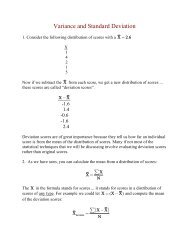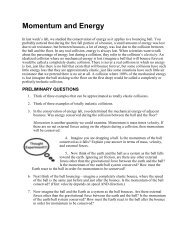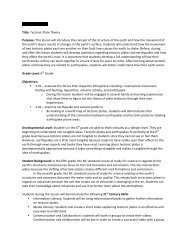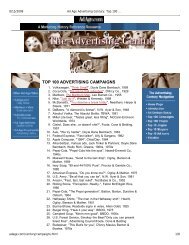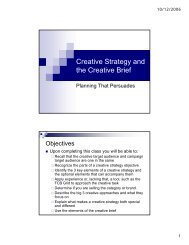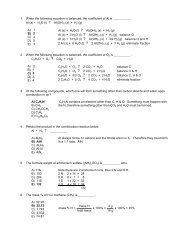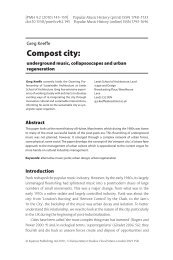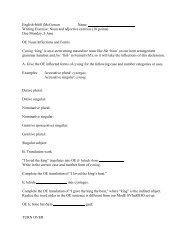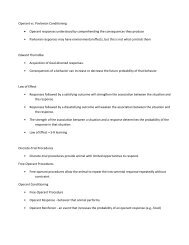Review for Exam 1 Please note that this list of questions/topics is not ...
Review for Exam 1 Please note that this list of questions/topics is not ...
Review for Exam 1 Please note that this list of questions/topics is not ...
You also want an ePaper? Increase the reach of your titles
YUMPU automatically turns print PDFs into web optimized ePapers that Google loves.
<strong>Review</strong> <strong>for</strong> <strong>Exam</strong> 1<br />
<strong>Please</strong> <strong><strong>not</strong>e</strong> <strong>that</strong> <strong>th<strong>is</strong></strong> <strong>l<strong>is</strong>t</strong> <strong>of</strong> <strong>questions</strong>/<strong>topics</strong> <strong>is</strong> <strong>not</strong> exhaustive. That <strong>is</strong>, you are responsible <strong>for</strong> all <strong>of</strong> the<br />
material presented in class and in the assigned readings.<br />
Chapter 1<br />
• What <strong>is</strong> learning?<br />
• What are the reasons <strong>for</strong> studying animals other than humans?<br />
• What <strong>is</strong> latent learning? Explain the learning‐per<strong>for</strong>mance d<strong>is</strong>tinction and give some<br />
examples <strong>of</strong> per<strong>for</strong>mance factors.<br />
• What <strong>is</strong> the general‐process approach to the study <strong>of</strong> learning?<br />
• Be familiar with the laws <strong>of</strong> learning (e.g., contiguity, contingency, temporal priority, similarity,<br />
contrast, frequency, parsimony) and examples <strong>of</strong> each.<br />
• Be familiar with the approaches to psychology d<strong>is</strong>cussed in Chapter 1 (e.g., behavior<strong>is</strong>m,<br />
empiric<strong>is</strong>m, cognitive behavior<strong>is</strong>m, functional<strong>is</strong>m, structural<strong>is</strong>m, etc.)<br />
Chapter 2 – Focus on Basic Terms and Definitions, less emphas<strong>is</strong> on Measurement <strong>of</strong> Behavior and<br />
Research Designs<br />
Chapter 3<br />
• What <strong>is</strong> a reflex?<br />
• What <strong>is</strong> a Fixed Action Pattern and how <strong>is</strong> it different than a reflex.<br />
• What <strong>is</strong> a sign stimulus (innate releasing mechan<strong>is</strong>m)<br />
• Be prepared to define and identify examples <strong>of</strong> habituation and sensitization.<br />
• What factors influence habituation and sensitization?<br />
• What <strong>is</strong> spontaneous recovery?<br />
• Describe the time course <strong>of</strong> habituation and sensitization.<br />
• What does it mean to be "stimulus specific"?<br />
• Is habituation stimulus specific?<br />
• Does sensitization show stimulus specificity?<br />
• What <strong>is</strong> d<strong>is</strong>habituation?<br />
• Explain the opponent‐process theory. Be sure to d<strong>is</strong>tingu<strong>is</strong>h between what happens to<br />
behavior and the primary and opponent processes <strong>that</strong> underlie the behavior.<br />
• What <strong>is</strong> the typical way <strong>that</strong> an emotional reaction changes over time?<br />
• How does <strong>th<strong>is</strong></strong> reaction change with repeated exposure to the situation <strong>that</strong> evokes the<br />
reaction?<br />
• What <strong>is</strong> the primary (a) and opponent (b) process? What triggers each?<br />
• How does the primary (A) process change with repeated exposure? (Hint: It doesn't)<br />
• How does the secondary (B) process change with repeated exposure?<br />
• How does opponent‐process theory explain drug tolerance?
• Explain Siegel's compensatory response model. How does it differ from the opponent‐process<br />
theory? What are the underlying processes and character<strong>is</strong>tics? How can it account <strong>for</strong> drug<br />
addiction?<br />
• Know Pavlov's theory <strong>of</strong> Stimulus Substitution ‐ What supports h<strong>is</strong> theory, what <strong>is</strong> problematic<br />
<strong>for</strong> it?<br />
• Explain all <strong>of</strong> the elements in Pavlovian conditioning (CS, US, CR, UR) Label all <strong>of</strong> the elements<br />
in a fear conditioning situation Label all <strong>of</strong> the elements in the autoshaping situation<br />
• What <strong>is</strong> a CER procedure?<br />
• What <strong>is</strong> a suppression ratio? How <strong>is</strong> it computed? What suppression ratio shows strong<br />
conditioning? What would a ratio <strong>of</strong> .2 mean? .5? .7?<br />
• What <strong>is</strong> delay conditioning? What <strong>is</strong> the d<strong>is</strong>tinction between trace and delay conditioning?<br />
Define simultaneous and backward conditioning.<br />
• How do the different conditioning procedures compare in terms <strong>of</strong> producing CRs?<br />
• How can we assess what <strong>is</strong> learned in simultaneous conditioning? Is there learning?<br />
• What <strong>is</strong> inhibitory conditioning?<br />
• What procedures generate inhibitory conditioning?<br />
• How <strong>is</strong> inhibition measured?<br />
• Why do we need more than one test <strong>of</strong> inhibition?<br />
Chapter 4<br />
• What <strong>is</strong> the procedure <strong>for</strong> producing extinction in Classical Conditioning?<br />
• Describe spontaneous recovery in Pavlovian conditioning. Give an example.<br />
• Why does extinction decrease behavior?<br />
• Give a real life example <strong>of</strong> Pavlovian conditioning and extinction. Label all parts.<br />
• What sort <strong>of</strong> learning <strong>is</strong> involved in extinction? How do we know <strong>th<strong>is</strong></strong>?<br />
• What <strong>is</strong> renewal and why <strong>is</strong> it important?<br />
• What <strong>is</strong> spontaneous recovery and why <strong>is</strong> it important?



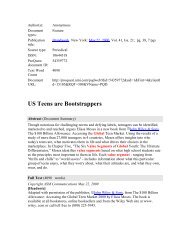

![Graduate Bulletin [PDF] - MFC home page - Appalachian State ...](https://img.yumpu.com/50706615/1/190x245/graduate-bulletin-pdf-mfc-home-page-appalachian-state-.jpg?quality=85)
